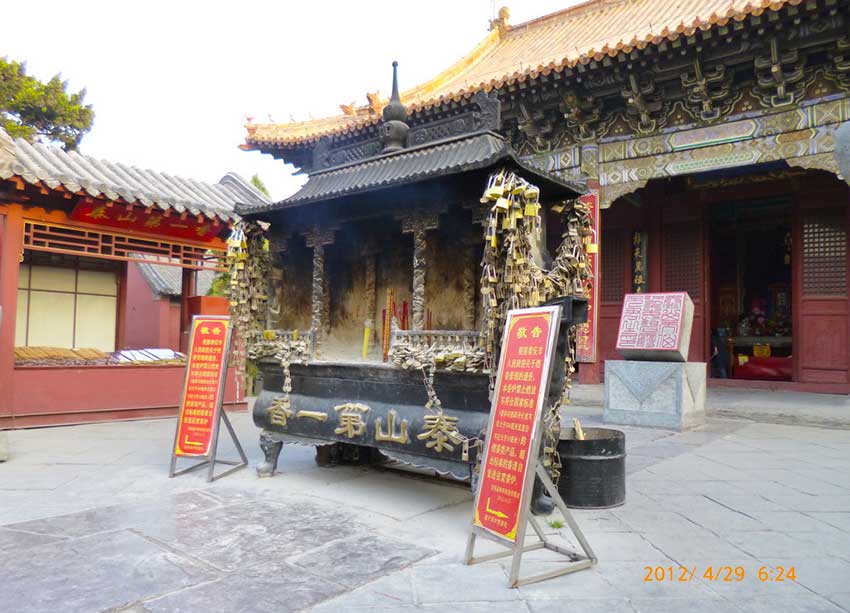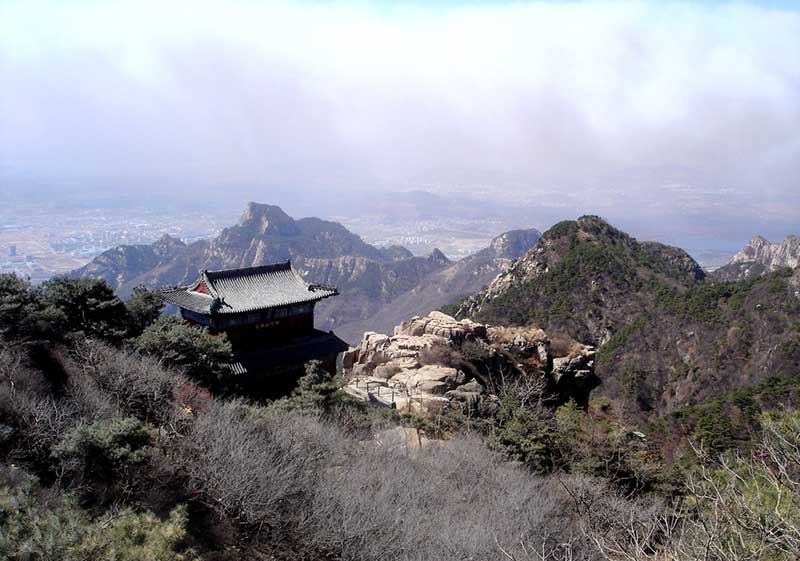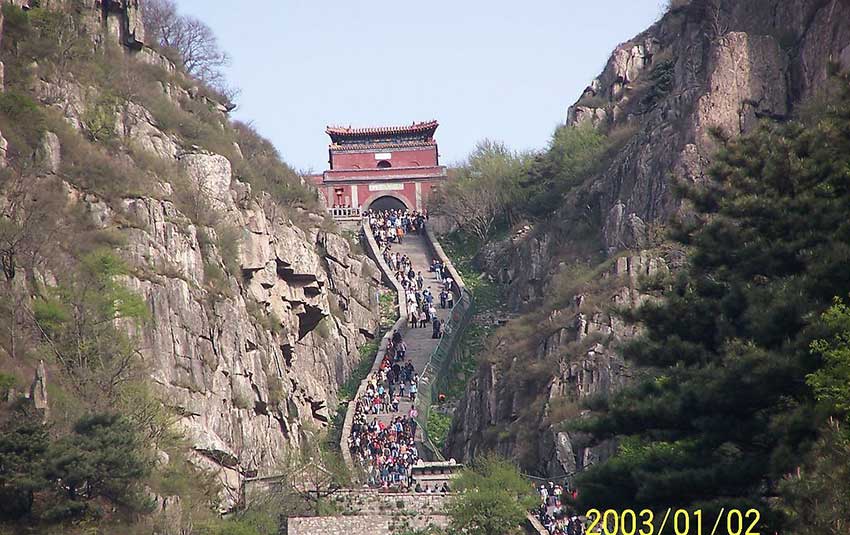Mount Tai Shan and Its Rich Cultural Contents
Mount Tai
Mt.Taishan is located in the middle of Shandong Province, with a total area of 426 sq km. As the highest peak in Shandong with an elevation of 1,545 meters, Mt. Taishan is called “Chief of the Five Sacred Mountains” and “First Mountain Under Heaven.”
With its abundant cultural treasures, Mt.Taishan is honored as a sacred mountain and the symbol of Chinese national spirit. From ancient times to the Qing Dynasty, emperors came to this reverend peak to hold grand ceremonies to worship the Gods of Heaven and earth. On the mountain there are 22 ancient construction complex, over 100 other buildings, more than 1,800 above carved stones, nearly 20,000 ancient trees and numerous poems and masterpieces written by scholars throughout different dynasties, all of which make Mt. Taishan the epitome of oriental culture.
Formed about 28 hundred million years ago, Mt.Taishan is famous for its imposing natural landscape. Besides its majesty, the Sunrise, Sunset Glow, Golden Belt of the Yellow River, the Sea of the Clouds are its four wonders. With a bird’s eye view, the mountain is divided by five valleys into six areas, which is features respectively by seclusion, spaciousness, beauty, mystery, elegance, and wonderful spectacles. Around the main peak, Jade Emperor, there are smaller 112 peaks, 98 ridges, 102 streams, 72 springs and 36 peculiar stones.
Experts of the World Heritage Committee of UNESCO said, “Mt.Taishan uniquely unites nature and culture together, and this means China has contributed a special heritage to the world.”
Mount Tai is well known for its spectacular, grandness, elevation, width, steadiness and massiness. The typical character of natural scenery of Mount Tai is imposing, steepy, surprising, serene, secluded, profound, and spacious. The picturesque of the Mount Tai has various sceneries like cragged cliff, deep canyon and gorge, grotesque peak and strange rocks, luxuriant vegetation and the flowing springs and twittering birds…. The mountain also has the unique marvelous wonders: the rising sun at dawn, the jade plate of sea of clouds, the aura appearing around Bixia Temple, rosy clouds at sunset etc.
Mountain Worship
The ceremony of mountain worship is unique old courtesy of Mount Tai, which forms the important element of apotheosis and godliness for Mount Tai. Because the ceremony was held by emperors of each dynasty, it attracted more attention and had far-reaching influence. From the legendary pre-historical period to Emperor in Song Dynasty, “Feng Shan” was a continuous traditional rite through primeval society to feudalized society.
According to the meaning in Zheng Yi written by Zhang Shoujie and recorded on historyin Shih Chi .Book of Feng Shan, “Feng Shan” is explained as “To build altar by soil on Mount Tai for returning the god of merits is called ‘Feng’; to clear the land on a hill below Mount Tai for expressing gratitude to earth is called “Shan””.
Therefore, the actual meaning of “Feng Shan” ceremony is to declare the emperor’s legitimate rule over the land and the people was in compliance with heaven’s will and to report the peace to god; moreover, to pray the blessing of the heaven. Certainly the emperor would also report how brilliant his achievement in his regality was. The connotation of the ceremony symbolized harmony between spiritual will and external behavior by harmonizing the relationship of heaven, terra, deities and humans. First emperor of Qin, Emperor Wu Di (140-87 BC) of the Western Han dynasty, Emperor Gaozong (650-683) of Tang dynasty, Emperor Xuanzong(r. 712-756) of Tang dynasty, Emperor Zhenzong of Song dynasty had ever held “mountain worship” ceremony “Feng Shan”. After Emperor Zhenzong, the posterior emperors came to Mount Tai only held sacrifice and didn’t hold “Feng Shan” anymore.
 |
 |
 |
 |
 |
 |
 |
 |
 |
 |
 |
 |
 |
 |
 |
 |
 |
 |
OPENING HOURS
| Week Days | 8:00 – 5:00 |
| Saturday | 9:00 – 5:00 |
| Sunday | 11:00 – 4:00 |




